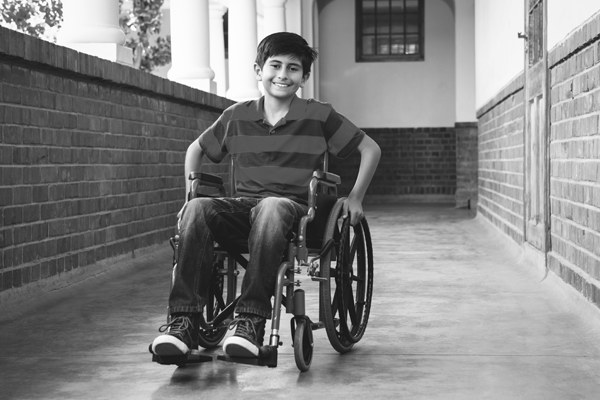Targeting Cardiac-Related Strokes in Infants
Targeting Cardiac-Related Strokes in Infants https://pediatricsnationwide.org/wp-content/themes/corpus/images/empty/thumbnail.jpg 150 150 Mary Bates, PhD Mary Bates, PhD https://secure.gravatar.com/avatar/c6233ca2b7754ab7c4c820e14eb518c8?s=96&d=mm&r=g- December 23, 2019
- Mary Bates, PhD
New study describes risk factors for stroke in children with cardiac disease.
Advances in surgical techniques and intensive care management have led to an increase in the number of infants surviving with cardiac disease. Unfortunately, children with cardiac disease are at higher risk for experiencing an arterial ischemic stroke. Now, a new study points to systemic illness and other risk factors that may contribute to both peri-procedural and spontaneous strokes in this population.
“The morbidity associated with stroke in the pediatric cardiac disease population is still quite high,” says Melissa Chung, MD, an attending pediatric neurologist and critical care physician at Nationwide Children’s and one of the study’s authors. “We’ve found it’s difficult to predict why certain children, even outside of their surgical periods, are at higher risk for stroke than the general population.”
To investigate the risk factors associated with stroke in pediatric cardiac disease patients, Dr. Chung and her colleagues turned to the International Pediatric Stroke Study, a multinational registry of data from children with stroke. Using these data, the researchers compared potential risk factors in two groups with pediatric stroke related to cardiac disease: those with a stroke occurring within 72 hours of a cardiac procedure versus thus who had experienced a spontaneous stroke.
Dr. Chung and her colleagues found that children with cardiac disease are at risk for stroke not only at the time of cardiac procedures, but also outside of the immediate 72 hours after a procedure. About three-quarters of all strokes occurred spontaneously outside of the peri-procedural period.
Additionally, approximately one-third of patients in both groups had a concurrent systemic illness at the time of their strokes. Dr. Chung, who is also associate professor of clinical pediatrics at The Ohio State University College of Medicine, says there are many aspects of the role of systemic infection in pediatric stroke that remain unknown. Nationwide Children’s is one of the sites involved in the Vascular Effects of Infection in Pediatric Stroke study looking to answer these questions.
The analyses also revealed that among the children with spontaneous stroke, preceding thrombotic events were common. Dr. Chung and her colleagues noted substantial variation in choice and duration of antithrombotic treatment. Pediatric stroke guidelines from the American Heart Association, updated in 2019, suggest low-molecular-weight heparin or warfarin treatment for at least one year in children with a risk of cardiac embolism, but in practice, it appears that only a limited proportion of patients with cardiac disease and stroke are managed in this way.
“Even though quite a few of these patients are receiving anticoagulation agents after their initial stroke, many of them are going home either not on any anti-thrombotic therapy at all or just on an anti-platelet agent,” says Dr. Chung.
“This raises two important questions: Are there children that we should be treating more aggressively with anti-thrombotic therapy before they actually have a stroke and are there further workups that we should be doing with children who have a preceding thrombotic event?”
Dr. Chung and her colleagues emphasize that despite the insights gained from this study, getting more information about underlying cardiac disease in these children will be important in terms of determining stroke risk factors. They point to the need for further multicenter prospective studies to determine the best practices for secondary stroke prevention in this vulnerable population.
Reference:
Chung MG, Guilliams KP, Wilson JL, Beslow LA, Dowling MM, Friedman NR, Hassanein SMA, Ichord R, Jordan LC, Mackay MT, Rafay MF, Rivkin M, Torres M, Zafeiriou D, deVeber G, Fox CK, International Pediatric Stroke Study Investigators. Arterial ischemic stroke secondary to cardiac disease in neonates and children. Pediatric Neurology. 2019 Nov;100:35-41.
About the author
Mary a freelance science writer and blogger based in Boston. Her favorite topics include biology, psychology, neuroscience, ecology, and animal behavior. She has a BA in Biology-Psychology with a minor in English from Skidmore College in Saratoga Springs, NY, and a PhD from Brown University, where she researched bat echolocation and bullfrog chorusing.
-
Mary Bates, PhDhttps://pediatricsnationwide.org/author/mary-bates-phd/December 27, 2016
-
Mary Bates, PhDhttps://pediatricsnationwide.org/author/mary-bates-phd/
-
Mary Bates, PhDhttps://pediatricsnationwide.org/author/mary-bates-phd/
-
Mary Bates, PhDhttps://pediatricsnationwide.org/author/mary-bates-phd/
- Posted In:
- In Brief






